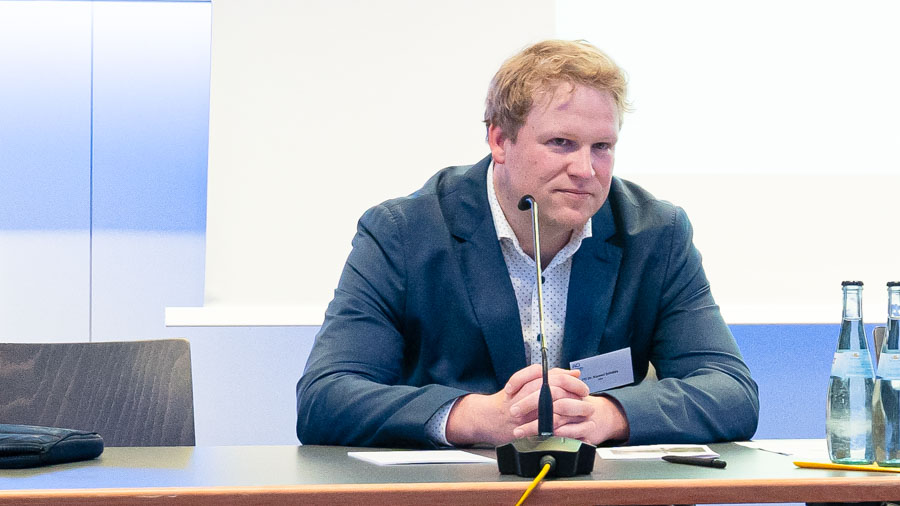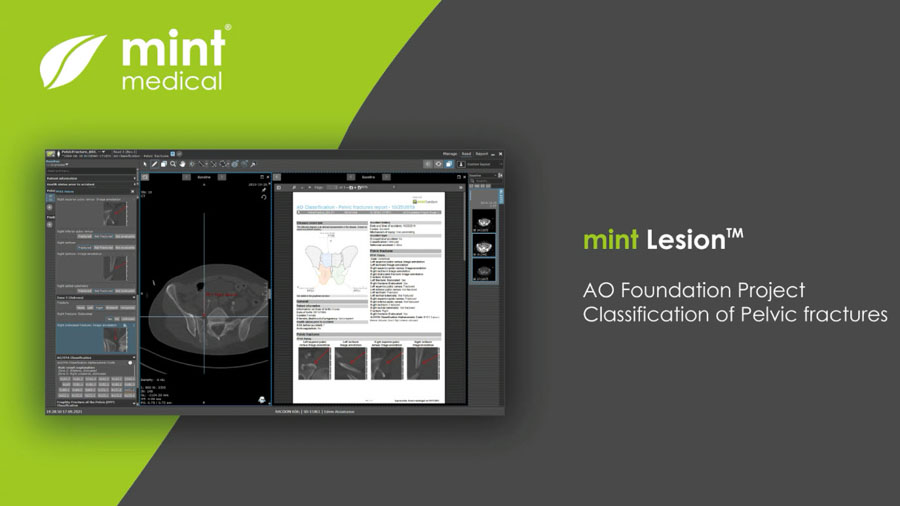Artificial intelligence assisted analysis and classification of pelvic ring fractures

While fractures of the pelvic ring—the sturdy ring of bones located at the base of the spine—are relatively uncommon, diagnosis and classification of these painful injuries are fundamental to helping patients avoid immobility, complications, and even death. Thanks to AO's innovation funding, Universitätsklinikum Ulm (UKU) senior physician Konrad Schütze, MD, PhD, senior radiologist Daniel Vogele and radiological software developer Mint Medical (a Brainlab company) are harnessing artificial intelligence (AI) as a tool that could revolutionize diagnosis and classification of pelvic ring fractures.
With support from the AO’s innovation funding, the 14-month pilot project got underway in December 2022, with the vision of building a cloud-based software solutions to—with the help of AI algorithms—to assist surgeons around the world in easily and precisely analyzing and classifying pelvic ring fractures, independently of their level of experience.
Schütze, coordinator of the UKU’s geriatric trauma center and level 1- trauma center, said that while pelvic ring fractures account for only 2–8 percent of all skeletal injuries, they are among the most complex to diagnose and classify.
“A patient with such an injury usually presents at the emergency room and is seen by a physician in training who has encountered few pelvic ring fractures. Even advanced residents probably haven’t seen many of these fractures, so our technology will be a very good support for them as well as for the attending radiologist,” he explained. “Radiologists can identify a pelvic ring fracture better than a surgeon, but they usually are not trained to classify it—and if you don’t classify the fracture, you probably can’t plan your treatment accordingly.”
The developed technology will detect fractures in a patient’s computed tomography (CT) scan and use AI to classify the fracture: The surgeon would upload CT images into the cloud and analyze them with help from the software; the surgeon would then mark all parts of the pelvic ring fracture. In a second step, the AI would help identify all parts of the fracture and independently classify it.
“The surgeon would then only need to verify correct marking and could use the structured report for treatment planning,” Schütze said. Based on the AI provided AO classification the surgeon may directly go to AO Surgery Reference to receive best in class advice how to plan the respective surgery.
“I would tell anyone with an innovative idea that could strengthen the AO’s position in surgeon education, digitalization, preclinical and clinical research tools: Submit your idea. I was surprised to get a response in just a few weeks,” Schütze said. “It’s difficult to get funding for orthopaedic trauma projects and this is where the AO comes in with its innovation resources, including knowledge and funding. The AO supports you every step of the way and it has been a great experience.”
You might also be interested in:
- Discover how to drive your idea toward success with the AO's expertise and funding
- Learn more about AO Surgery Reference
- Read about AO Immediate Past President Florian Gebhard's lasting legacy


